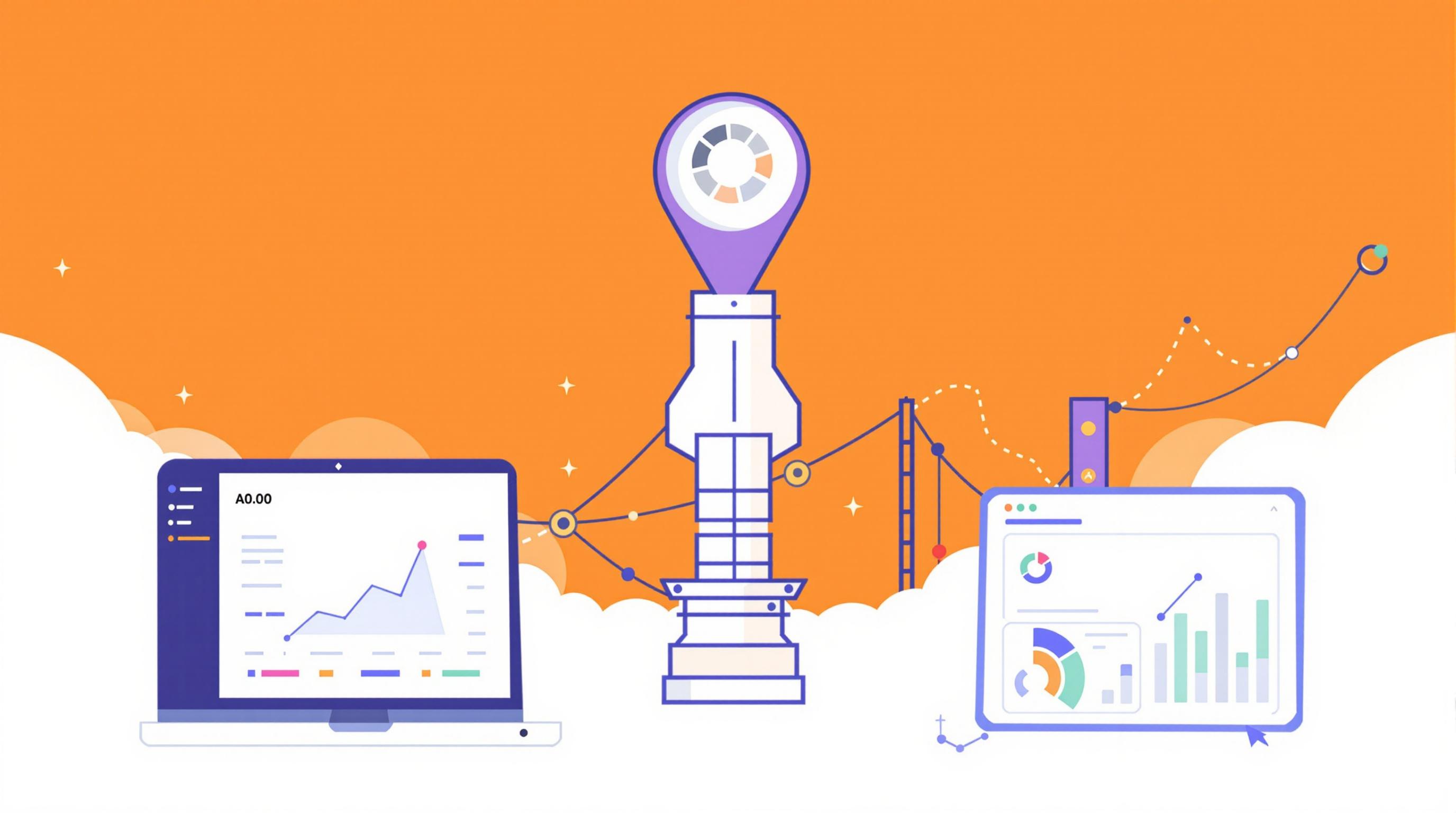Related Articles
- Top 6 Next-Gen B2B SaaS Engines Shaping Retention With AI-Powered Predictive Insights Since 2019
- Top 6 Emerging SaaS Onboarding Platforms of the Last Five Years That Actually Boost User Stickiness
- Top 8 Under-the-Radar Analytics Tools Launching Since 2019 That Outperform Big Names
- Top 7 Next-Gen Workflow Automation Platforms Revealed Comparing Game-Changing Features from the Last Five Years
- Top 6 Next-Gen Endpoint Security Solutions Since 2019 That Outsmart Modern Cyber Threats
- The Unseen Ripple Effect: How Obscure API Endpoints Influence Global Data Ecosystems in Unexpected Ways
5 Breakthrough Analytics Tools Enhancing Real-Time Sentiment Analysis for Competitive Brand Monitoring
5 Breakthrough Analytics Tools Enhancing Real-Time Sentiment Analysis for Competitive Brand Monitoring
Introduction to Real-Time Sentiment Analysis in Brand Monitoring
In today’s rapidly evolving digital landscape, brands must stay ahead by understanding real-time consumer sentiment. Real-time sentiment analysis provides businesses the ability to gauge public opinion instantly, enabling swift reactions to market trends and consumer feedback. This proactive approach to brand monitoring is becoming indispensable for competitive advantage.
By continuously analyzing social media, reviews, and other user-generated content, brands can detect shifts in sentiment and address issues before they escalate. The integration of advanced analytics tools has revolutionized how businesses track and interpret consumer emotions. This transformative capability equips brand managers with actionable insights that foster customer loyalty and reputation management.
The following sections highlight five breakthrough analytics tools that are enhancing real-time sentiment analysis for competitive brand monitoring. These tools harness artificial intelligence, machine learning, and big data technologies to deliver unprecedented accuracy and speed in sentiment detection. Industry leaders and marketers alike are leveraging these innovations to stay connected with their audience and outperform competitors.
Tool 1: Brandwatch Consumer Research
Brandwatch Consumer Research is a leading platform that empowers brands with extensive real-time sentiment analysis. It collects data across millions of online sources, providing comprehensive insights into consumer emotions and trends. Its advanced AI models classify sentiment reliably, enabling effective brand monitoring.
One standout feature of Brandwatch is its ability to segment audiences by demographics, location, and interest, facilitating targeted marketing strategies. Moreover, its dashboard offers intuitive visualizations that help users quickly interpret data and identify emerging sentiment patterns relevant to their brand's reputation.
According to Forrester’s Wave report on social listening platforms (2023), Brandwatch ranks among the top performers for accuracy and user experience. Companies using this tool have reported faster response times to negative feedback and improved customer engagement metrics, underscoring its efficacy in competitive brand monitoring.
Tool 2: Talkwalker Analytics
Talkwalker Analytics excels in real-time sentiment analysis by aggregating data from social media, news sites, blogs, and forums. Its proprietary AI engine enables nuanced understanding of language, including sarcasm and context, which often challenge sentiment detection algorithms.
The platform offers robust real-time alerting systems that notify users of sentiment shifts instantly. It also supports competitive benchmarking, allowing brands to compare their sentiment metrics against key rivals, which provides strategic insights for market positioning.
Gartner’s 2024 Market Guide for Social Analytics platforms highlights Talkwalker’s strength in visual analytics and multilingual sentiment classification, making it ideal for global brands aiming to monitor cross-cultural sentiment dynamics effectively.
Tool 3: Lexalytics Salience
Lexalytics Salience is a powerful text analytics solution designed for real-time sentiment and intent analysis across diverse datasets. Its customizable engines allow businesses to tailor sentiment parameters specific to their industry or brand voice, enhancing accuracy.
It supports deep linguistic analysis, breaking down sentence structure to understand sentiment modifiers and complex expressions. This capability ensures that nuanced consumer opinions are correctly interpreted, reducing false positives and negatives in sentiment scoring.
Enterprise users benefit from its scalable architecture that processes high volumes of data swiftly, ideal for brands operating in fast-paced markets. As reported by CIO Magazine (2023), Lexalytics has improved decision-making processes by providing granular sentiment insights that guide product development and customer service strategies.
Tool 4: NetBase Quid
NetBase Quid combines AI-powered sentiment analysis with competitive intelligence to deliver comprehensive brand monitoring solutions. Its platform captures and analyzes billions of data points from social conversations, review sites, and news reports in real-time.
The tool’s unique competitive benchmarking enables brands to visualize market share sentiment and identify strengths and weaknesses relative to competitors instantly. Such intelligence is vital for strategic marketing campaigns and reputation management.
In a recent case study, a leading consumer electronics company utilized NetBase Quid to detect early signals of product dissatisfaction, enabling rapid mitigation and reducing potential negative impact. This exemplifies the tool’s role in protecting and enhancing brand reputation through real-time insights.
Tool 5: Sprinklr Modern Care Analytics
Sprinklr Modern Care Analytics focuses on integrating real-time sentiment analysis with customer experience management. It seamlessly connects brand monitoring data with customer service workflows, helping brands respond promptly to sentiment changes at scale.
Its AI-driven analytics interpret emotional tones and urgency indicators, prioritizing interactions that require immediate attention. This approach not only improves sentiment but also enriches customer relationships by demonstrating responsiveness.
Forrester's Customer Experience Wave (2024) notes Sprinklr as a leader in combining real-time social listening with customer care analytics, making it a strategic tool for brands seeking to unify sentiment insights with operational action.
Comparative Advantages of These Analytics Tools
The five highlighted analytics tools each bring unique strengths to real-time sentiment analysis for competitive brand monitoring. Brandwatch and Talkwalker specialize in broad data source integration and advanced language understanding, respectively. Lexalytics offers customization and granular linguistic analysis, while NetBase Quid emphasizes competitive intelligence and market positioning.
Sprinklr integrates sentiment analysis with customer care functions, ensuring that insights directly translate into improved customer experiences. Together, these tools cater to various brand monitoring needs, from large-scale data processing to actionable customer service interventions.
Choosing the right tool depends on organizational goals, industry specifics, and the desired balance between data depth and operational integration. Many brands benefit from combining these platforms or using complementary features to build a robust competitive analysis framework.
Impact on Marketing Strategies and Brand Reputation
Real-time sentiment analytics tools enable marketers to craft more responsive and customer-centric campaigns. By understanding sentiment trends, brands can tailor messaging that resonates deeply with target audiences, boosting engagement and loyalty.
Moreover, early detection of negative sentiment allows brands to deploy crisis management tactics promptly, safeguarding reputation. This dynamic responsiveness is crucial in the digital age where brand narratives can shift rapidly through social media amplification.
Analytics also support segmentation by sentiment, helping marketers to refine targeting and personalize content strategies. The integration of these insights into brand planning processes leads to measurable improvements in brand equity and market share.
Challenges and Considerations in Using Sentiment Analysis Tools
Despite their effectiveness, real-time sentiment analysis tools face challenges such as handling linguistic nuances, sarcasm, and cultural differences that influence sentiment interpretation. No tool guarantees 100% accuracy, and understanding these limitations is important for reliable insights.
Data privacy and compliance with regulations like GDPR also require careful management when collecting and analyzing consumer information in real-time. Brands must implement ethical data use practices alongside these technologies.
Additionally, integrating sentiment analysis insights into decision-making workflows demands organizational readiness and cross-functional collaboration. Without adequate training and process alignment, the full potential of these tools may remain untapped.
Future Trends in Real-Time Sentiment Analytics for Brand Monitoring
Advances in natural language processing, such as transformer-based models, are expected to enhance sentiment detection accuracy significantly. Future tools will better contextualize emotions, including complex expressions like irony or mixed sentiments.
Integration with multimodal data sources, including video and audio sentiment cues, will provide richer insights beyond text analysis. This convergence will enable brands to perceive consumer sentiment more holistically.
Finally, automation and AI-driven predictive analytics will empower proactive brand management by forecasting sentiment shifts and recommending optimal responses. The evolution of these technologies promises to make real-time sentiment analysis even more central to competitive brand monitoring.
Conclusion
The emergence of advanced analytics tools for real-time sentiment analysis is transforming how brands monitor and respond to consumer perceptions. Platforms such as Brandwatch, Talkwalker, Lexalytics Salience, NetBase Quid, and Sprinklr Modern Care Analytics offer diverse capabilities that enhance competitive brand monitoring.
By leveraging these tools, brands can react swiftly to sentiment changes, tailor marketing strategies, and protect their reputations in an increasingly dynamic marketplace. Despite challenges, the strategic application of sentiment analytics promises significant benefits for brand equity and customer engagement.
As technology progresses, real-time sentiment analysis will become more precise and predictive, further solidifying its role as a cornerstone of effective brand monitoring and competitive differentiation.




